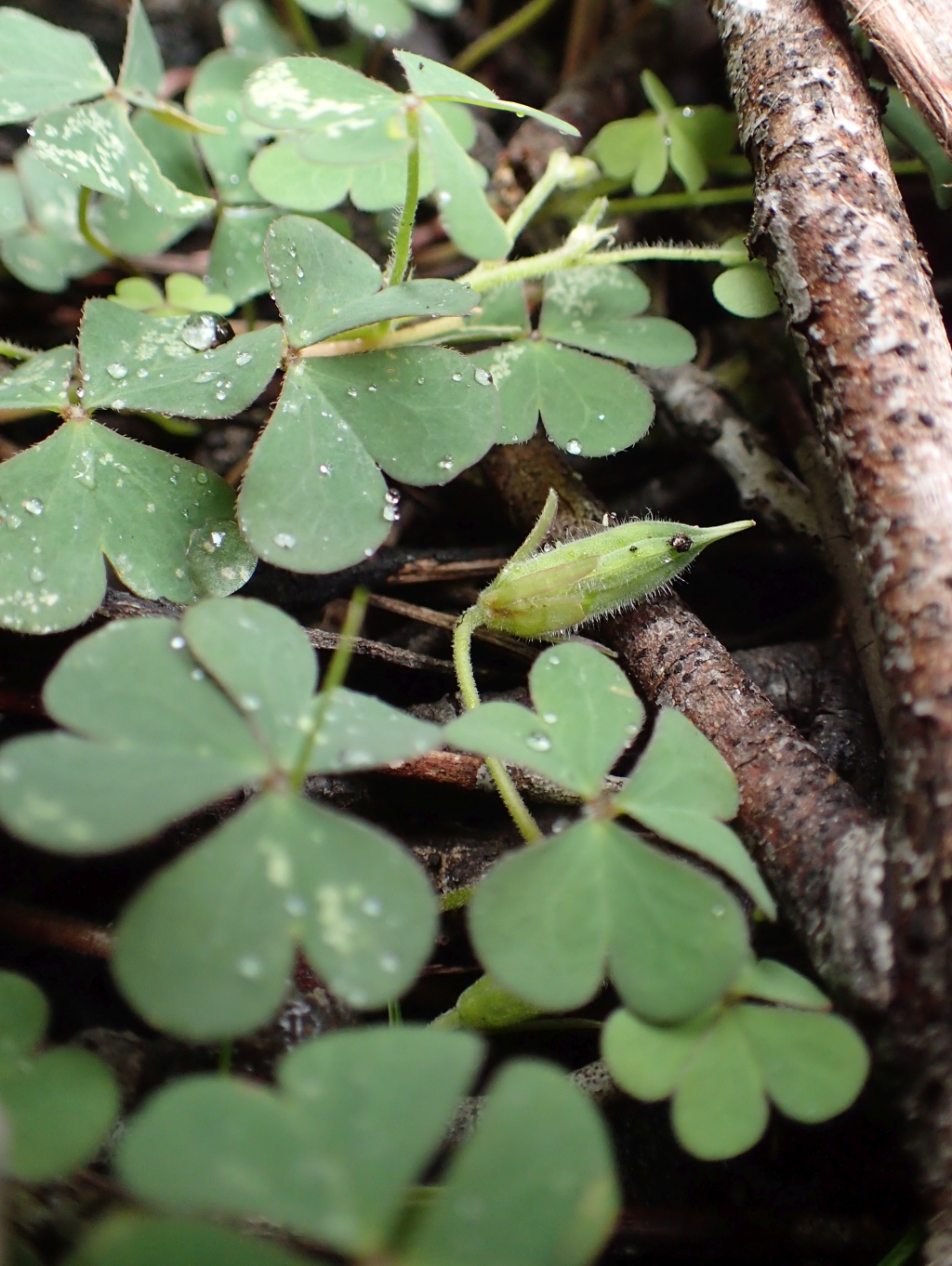Oxalis chnoodes
Lourteig Downy Wood-sorrelHerb with stems creeping or decumbent, to 40 cm long, sparsely to densely hairy, hairs spreading and/or retrorse; taproot absent; bulbils absent. Leaves cauline, fasciculate, 3-foliolate; leaflets subsessile, obovate-cuneate, 4–14 mm long, 4–16 mm wide, bilobed, green, sparsely to densely pubescent above, more densely hairy below, margins ciliate, sinus to c. one-fifth leaflet length, lobes oblong to obovate, apices rounded, 2–12 mm apart; petioles usually 0.5–4 cm long, densely covered with spreading hairs; stipules inconspicuous to moderate-sized, c. 1.5 mm long, rounded to truncate, often hidden by apical hairs when young, usually densely hairy, densely ciliate. Inflorescences axillary, flowers 1–4 per peduncle, usually held a little above leaf level; peduncle densely covered with spreading hairs; pedicels erect or reflexed in fruit (but capsule erect). Sepals elliptic, 3–4.5 mm long, ciliate. Petals 6–12 mm long, yellow. Capsule 7–9 mm long, 3–4 mm diam., broad ellipsoid to ellipsoid, retrorse-hairy with short simple hairs and longer overlying patent septate hairs; seeds 1.5–2 mm long, transversely ribbed with 7–11 ribs, the ribs narrow, grooves wide and deep, brown, uniformly coloured or ribs with faint greyish lines or blotches. Flowers May–Dec.
GleP, VVP, VRiv, OtP, CVU, GGr, NIS, EGL, EGU, HSF, HNF, HFE, VAlp. Also Qld, NSW. Papua New Guinea, New Zealand. Oxalis chnoodes has been collected from a variety of habitats, including heathland, wet sclerophyll forest and riparian sites.
Widespread and scattered across southern Victoria, from Portland to East Gippsland, but poorly known, and not often collected. The species may be more common than herbarium collections suggest. Oxalis chnoodes may be confused with the hairiest forms of the variable Oxalis corniculata, and with O. exilis on account of the relatively short capsules. O. chnoodes can usually be recognised by its hairiness (hence the name, which is derived from Greek for velvety), the young shoots and petioles in particular usually being densely hairy. It differs from O. corniculata in its shorter and more stout fruit, usually densely hairy leaf lower surfaces, smaller stipules, and the stems which do not root at the nodes. It differs from O. exilis in usually having densely hairy leaf lower surfaces, smaller stipules, and stems which do not root at the nodes, and which are sparsely to densely hairy with spreading or retrorse hairs. Many unvouchered site records attributed to O. chnoodes are therefore likely to be referable to O. corniculata and/or O. exilis. O. chnoodes may also be confused with and difficult to distinguish from O. radicosa, especially specimens lacking mature fruit. O. chnoodes differs from O. radicosa in lacking a stout taproot, which is present in O. radicosa. Sykes (2009), however, notes that in New Zealand O. chnoodes has a moderately stout taproot, whereas Australian plants appear to lack a taproot. O. chnoodes also differs from O. radicosa in usually having relatively shorter capsules, and long and trailing stems, whereas the stems in O. radicosa are usually erect or ascending.
 Spinning
SpinningSykes, W.R. (2009). The Oxalis corniculata group. New Zealand Journal of Botany 47: 107–113.



